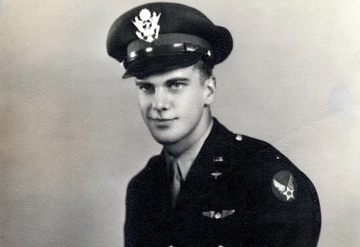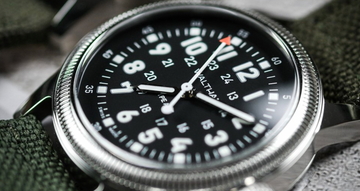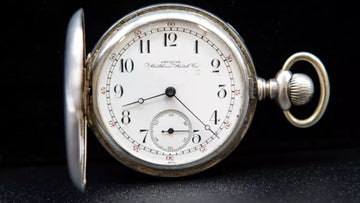1st of October 2023: the 76th anniversary of the F-86 Sabre and the Waltham A-17
Oct 05, 2023

On October 1st 1947, after three years of development in which 801,386 engineering hours and 340,594 drafting hours had been expended, the first prototype North American Aviation XP-86 (later F-86), serial number 45–59597, took off at Muroc Dry Lake, north of Los Angeles, with North American Aviation test pilot George S. Welch in the cockpit.
In the same year the first prototype of the F-86 pilot’s watch, the Waltham A17 saw the light.

George S. Welch , the maiden flight pilot, studied mechanical engineering at Purdue and enlisted in the Army Air Corps in 1939.

He is best remembered as one of the heroes of Pearl Harbor. He was one of only two fighter pilots to get airborne during the Japanese surprise attack on Hawaii, 7 December 1941. Flying a Curtiss P-40B Warhawk, he shot down three Aichi D3A “Val” dive bombers and one Mitsubishi A6M2 Zero fighter. For this action, Lieutenant General H.H. “Hap” Arnold recommended the Medal of Honor, but because Lieutenant Welch had taken off without orders, an officer in his chain of command refused to endorse the nomination. He received the Distinguished Service Cross.


After testing, the North American Aviation XP-86 was approved for production as the F-86A. It became operational in 1949. The first squadron to fly the F-86 held a naming contest and from 78 suggestions, the name “Sabre” was chosen.
The F-86 Sabre was in production until 1955 at North American’s Inglewood, California, and Columbus, Ohio, plants. It was also built under license by Canadair, Ltd., Sain-Laurent, Quebec, Canada; the Commonwealth Aircraft Corporation, Port Melbourne, Victoria, Australia; and Mitsubishi Heavy Industries at Nagoya, Aichi Prefecture, Japan. A total of 9,860 Sabres were built. They served with the United States Air Force until 1970.






